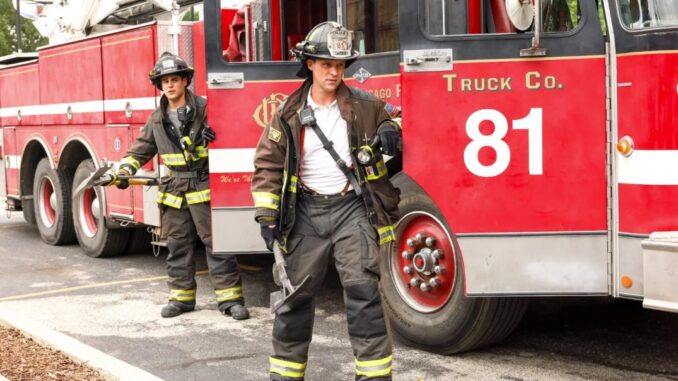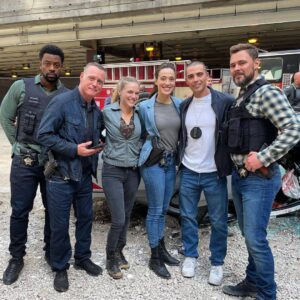
Ever since its 2012 start, no matter how attractive its actors, there is only one person who truly puts the heat, smoke and flames to “Chicago Fire”: special effects coordinator and pyrotechnic John Milinac.Fire may be the star of Dick Wolf’s red-hot series, but Milinac is its master.

For ten seasons, Milinac has pitted Chicago’s imaginary firefighters and paramedics against raging flames, quickly enveloping smoke and crumbling properties, as well as exploding cars, runaway trucks, un-moored electrical wires and more than a few slippery roofs.
Demi Moore on Full Frontal Nudity With Margaret Qualley in ‘The Substance’: ‘A Very Vulnerable Experience’ but I Had a ‘Great Partner Who I Felt Very Safe With’
Working on this season’s seventh episode when speaking to Variety, Milinac and his 13-person team are prepping a “burn stage” and all of its elements so that it can be turn-key ready for filming on Tuesday morning. “That’s a lot of push, especially after we just wrapped an exterior fire that was condensed — which means things are overlapping — and next, we have some carnage with a handful of vehicles, which means we’re going to have some pre-damage to do in advance.”

Along with creating and executing such levels of destruction, “Chicago Fire” style, Milinac has to speak with nearly every on-set head — from art departments to writers — before he and his team can hit the ground running. “A lot of action from one episode often bleeds into that of another, so that’s always on my mind.”
Milinac didn’t just show up on the set of “Chicago Fire” with a blow torch and a dream. He cut his teeth in mechanical SFX coordination and supervision for films such as 2010’s “A Nightmare on Elm Street” and 2009’s “Friday the 13” — where fire, snow and rain were vital to the story. “Personally, it’s a sense of expansion, always learning something new,” he says. “You learn what you can do, episodically. You learn what fire can do. You apply what you’ve learned, and show what you can expect would happen. I can give you more of this…. If we do that.”
Milinac says “Chicago Fire” fires start in the writers’ room, where the team figures out what they want for a scene, often based on personal, “jaw-dropping, real world” experience. Milinac can then put ideas into context as to what is and isn’t possible for his tech and effects crews.
Then come the conversations about on-camera effects and safety concerns, which are put at the top of a long list of considerations for each scene. As with any experiment, there’s plenty of trial and error.
“We go to locations for most of our exteriors, so we have to look at those exteriors as custom builds with its own selection process of what will and won’t work,” Milinac says. “One location has three windows. Another has ten. What works better? Which one maybe has the city in the background? Which one has another building next to it so that we have to protect that property too? We keep our eyes open always. You can’t let one aspect get away from you, and if you do, we have to address that which is scorched or melted, we take responsibility and we fix it. When we’re dealing with our stages, it’s a rebuild every week — the next episode may not have a fire, but the episode after that might have two.”

Whether interior or exterior, in consultation with its art department, “Chicago Fire’s” flames are directed like a conductor leading an orchestra: where are they needed, what is the duration of the burn, to what degree will the material used burn? “The drywall won’t burn, but the paper will — we can stay in front of that,” says Milinac, noting that many set piece “products” (like fake television sets or stereo components) are made out of steel so they don’t burn.
Fire may be ferocious, frightening and epic to watch, but as a material to work with in film and television, it is unreliable and fickle. How does Milinac manipulate fire to his liking — and when those plans go awry, how does digital technology come to the rescue?
Managing a fire comes, in part, from how a “Chicago Fire” set is built. “Heat is a big gauger,” says Milinac. “If you’ve made a box, you’ve made an oven, so you have to make sure a crew can sustain in there, wearing all fireproof material with actors wearing real-world fire department turnout gear, and be mindful of our ‘victims.’ We have to keep heat exiting all the time. We’re in a constant state of ventilation, with smoke — a legitimate atmosphere — always being evacuated. With real fires, you wouldn’t see your hand in front of your face. But for ‘Chicago Fire’ storytelling purposes, we have to be able to see.”
